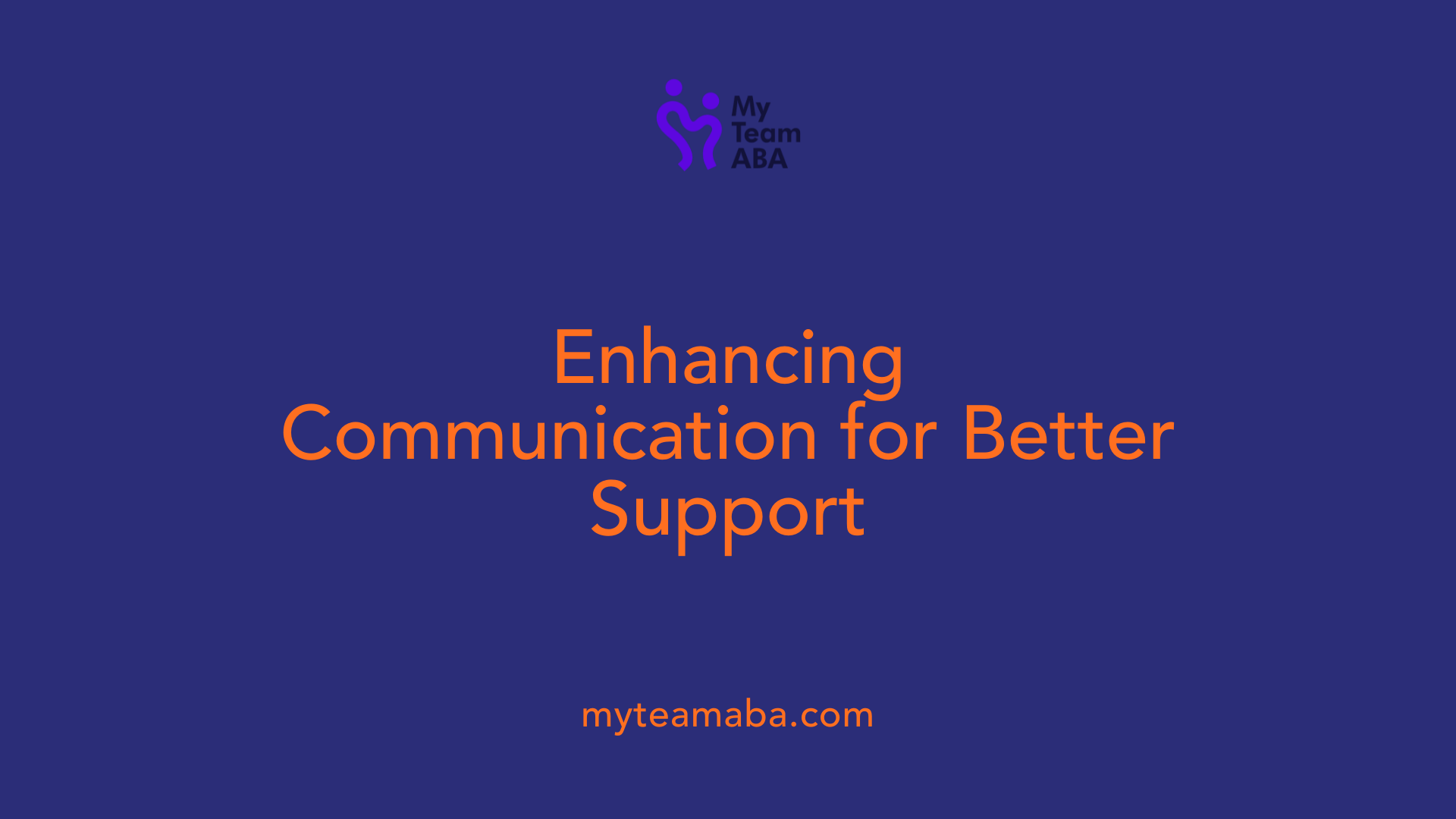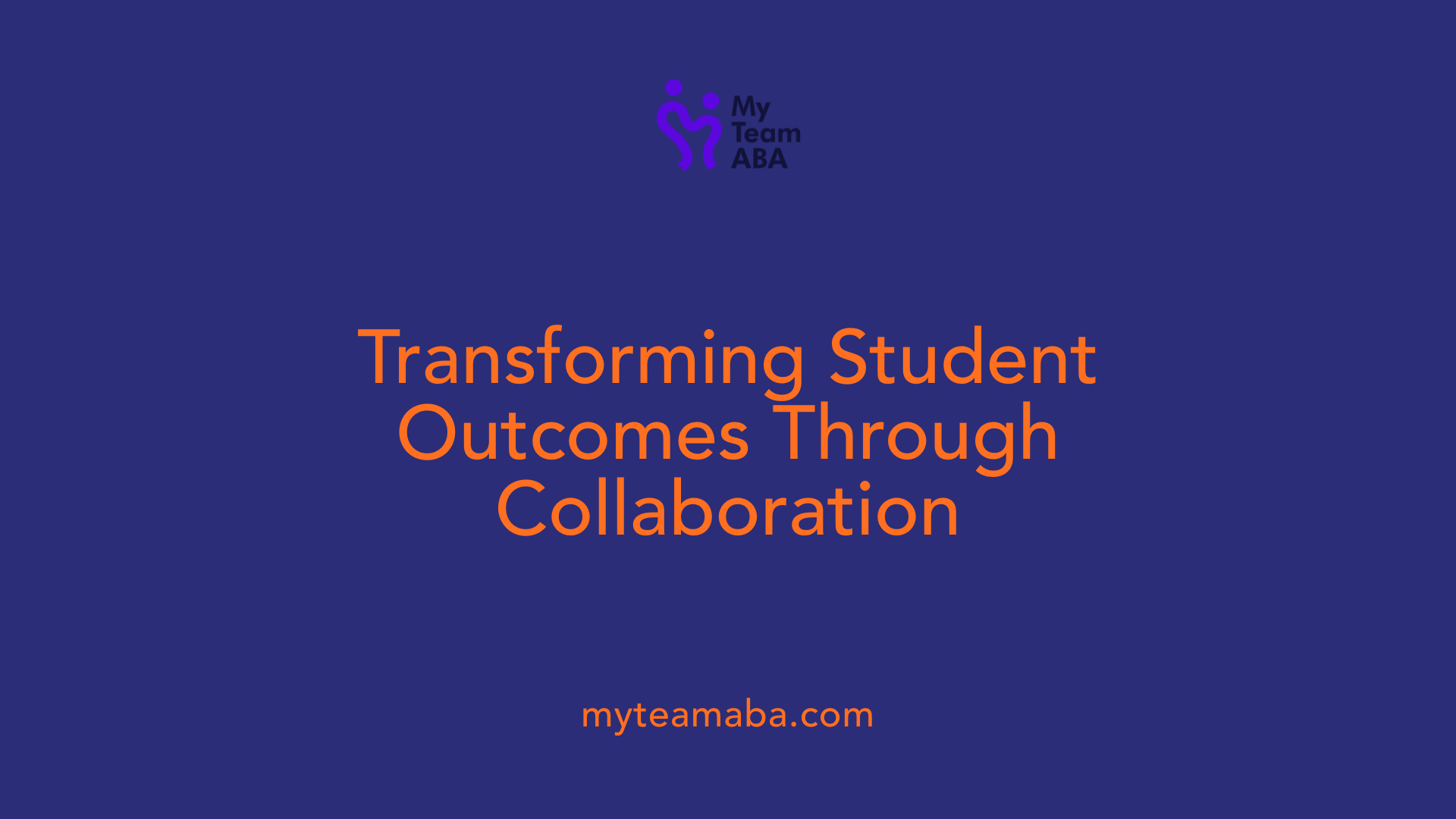How to Foster Collaboration Between ABA Therapists and Educators
August 1, 2025
Enhancing Teamwork for Better Outcomes in Autism Support

Building Bridges: The Foundation of Successful Collaboration
Effective collaboration between ABA therapists and educators is crucial to supporting children with autism spectrum disorder (ASD). When these professionals work together seamlessly, they can provide consistent, personalized interventions that significantly improve social, communication, behavioral, and academic skills. This article explores strategies, roles, and principles that foster a cohesive, interdisciplinary approach tailored to meet each child's unique needs.
Roles and Responsibilities in a Collaborative Setting
What are the roles and responsibilities of ABA therapists and educators in a collaborative setting?
In a collaborative environment, ABA therapists and educators work together closely to support a child's growth and learning. Both have distinct yet interconnected responsibilities that, when combined, create a comprehensive support system.
ABA therapists primarily focus on implementing behavior management techniques based on evidence. They carry out strategies such as positive reinforcement, data collection, and regular progress monitoring. Their goal is to modify and encourage desirable behaviors while reducing problematic ones, tailoring interventions to meet each child's unique needs.
Educators, on the other hand, are responsible for delivering curriculum content, managing classroom activities, and fostering social interactions. They incorporate ABA principles into daily routines and instruction to promote learning, social skills, and independence.
Effective teamwork requires ongoing communication and shared goals. Both professionals share insights, discuss progress, and adjust strategies collaboratively. They participate in case conferences, co-develop treatment and educational plans, and align their efforts to ensure consistency across settings.
This partnership extends beyond the classroom or therapy room. It involves mutual respect and understanding of each other's expertise and roles. The combined approach aims to remove learning barriers, support behavioral change, and develop skills across behavioral, social, communication, and daily living domains.
By working together seamlessly, ABA therapists and educators help foster an environment where children can thrive, achieve their personal goals, and enhance their overall quality of life. The result is a holistic, integrated plan that addresses all facets of development within the child's natural environments, promoting lasting positive outcomes.
Strategies and Best Practices for Fostering Effective Collaboration

What strategies enhance effective collaboration between ABA therapists and educators?
Successful collaboration hinges on several practical strategies that align efforts and foster teamwork. One of the most important is maintaining regular communication through scheduled team meetings where progress, challenges, and upcoming plans are discussed openly. These meetings help ensure everyone is on the same page and can contribute insights.
Shared documentation and data collection also play a vital role. By utilizing common platforms or tools to record student progress and behavioral observations, educators and therapists can track growth effectively and adjust interventions as needed. This consistent approach across settings ensures the student receives cohesive support.
Ongoing professional development is essential to keep staff up-to-date with ABA techniques and best practices. Training sessions, workshops, and collaborative learning opportunities build confidence and competence in applying ABA strategies in educational environments.
Building trust and mutual respect among team members creates a positive working atmosphere. When teachers, therapists, and parents value each other's expertise and contributions, it promotes a more cohesive approach. This mutual appreciation helps in swift decision-making and swift adaptation of strategies.
Implementing these practices encourages shared responsibility, enhances the quality of support provided to students, and promotes a unified effort toward their social, behavioral, and academic development.
Integrating ABA Principles into Educational Environments

How can ABA therapy principles be integrated within educational environments?
Implementing ABA principles in schools requires a structured approach that combines staff training, assessment, individualized planning, and ongoing evaluation. First, training educators and support staff on core ABA strategies—such as reinforcement, prompting, and data collection—is crucial. This ensures consistent application of techniques across classroom and non-classroom settings.
Conducting detailed behavioral and environmental assessments helps identify each child's specific strengths and challenges. Based on this information, teams can develop tailored behavior intervention plans (BIPs) that set clear goals and outline targeted strategies for supporting positive behavior and skill development.
A cornerstone of effective ABA integration involves using reinforcement systems—like praise, tokens, or preferred activities—to motivate desired behaviors. Visual supports such as schedules, social stories, and cue cards can also enhance understanding and communication.
Monitoring student progress through systematic data collection—using methods like frequency counts, ABC data, and duration recordings—enables teachers and specialists to assess what works and what needs adjustment. Regular analysis of this data helps fine-tune interventions to meet evolving needs.
Collaborative efforts among ABA therapists, teachers, school psychologists, and families create a consistent, supportive environment both inside and outside the classroom. This teamwork ensures that approaches are cohesive, culturally sensitive, and aligned with educational goals.
Overall, integrating ABA into educational settings fosters not only improved behavior but also promotes the development of communication, social, and academic skills, setting students on a path toward greater independence and success.
Approaches to Teamwork and Interdisciplinary Cooperation

What approaches support teamwork and interdisciplinary cooperation to assist children with autism?
Supporting children with autism effectively requires a coordinated team effort that brings together various professionals, educators, and families. Different models of collaboration help facilitate this teamwork, each with its own scope and level of integration.
Multidisciplinary, interdisciplinary, and transdisciplinary models are primarily used to organize how team members work together. The multidisciplinary approach involves professionals working independently on their areas of expertise, sharing information through reports. The interdisciplinary model encourages more active collaboration, with team members integrating their skills to develop common strategies. The transdisciplinary model is the most holistic, where team members negotiate roles, share responsibilities, and often cross traditional professional boundaries to create unified interventions.
Open, ongoing communication is crucial across all models. Regular meetings, shared documentation, and active listening help ensure everyone stays informed and aligned. Clearly defining roles prevents overlap and confusion, allowing each member to focus on their strengths while working towards shared goals.
Fostering mutual trust and respect is essential for a successful team. When professionals — including Board-Certified Behavior Analysts (BCBAs), therapists, teachers, and family members — respect each other's expertise, collaboration becomes more effective. Building a collaborative culture involves shared responsibility and joint problem-solving.
Organizational support through training sessions, resource sharing, and conflict resolution strategies further enhances team cohesion. Institutions often promote standardized practices like team meetings, shared intervention plans, and collective data analysis, which help generalize skills and maintain consistency across environments.
Family involvement is a central component. Engaging parents and caregivers in planning and decision-making ensures that interventions are tailored to the child’s needs and preferences. A client-centered, evidence-based approach emphasizes listening to families and incorporating their insights.
Continual professional development and flexibility allow teams to adapt to evolving needs. Incorporating new evidence, technology, and methods keeps interventions relevant and effective.
In summary, effective support for children with autism relies on various teamwork approaches—multidisciplinary, interdisciplinary, and transdisciplinary—each emphasizing open communication, shared roles, and collaboration. These methods, combined with family involvement and standardized practices, foster a comprehensive environment where children can thrive.
Communication and Collaboration Techniques Between ABA Professionals and School Staff

What techniques can improve communication and collaboration between ABA professionals and school staff?
Effective communication and teamwork are essential for successful ABA therapy integration within educational settings. Regularly scheduled team meetings provide a structured platform where all stakeholders—teachers, behavior analysts, therapists, and parents—can share updates, discuss progress, and adjust strategies as needed. These meetings help ensure everyone is aligned with the child's goals and intervention plans.
Shared digital platforms serve as an indispensable tool for transparency and real-time information exchange. Software like data collection apps allows team members to monitor student progress diligently, make immediate adjustments, and maintain consistency across different environments. Data tools also support informed decision-making and facilitate ongoing assessment.
Joint training sessions and workshops are valuable for building understanding and consistency. When school staff participate in training on ABA principles, reinforcement techniques, and behavioral strategies, they become better equipped to support the child's development across settings.
Open, respectful communication channels—such as email, phone conversations, and face-to-face discussions—are vital for continuous dialogue. They help address concerns promptly, clarify expectations, and foster a collaborative mindset.
Parent and student involvement is also crucial. Regular communication with families ensures that strategies used at school are reinforced at home, creating a cohesive support system.
By implementing these approaches—structured meetings, shared platforms, joint training, and open dialogue—teams can work more cohesively, improving outcomes for children receiving ABA therapy.
Benefits of Collaboration for Student Outcomes

What are the benefits of collaboration between ABA therapists and educators for student outcomes?
When ABA therapists and educators work together, the results for students can be significantly improved. This partnership allows for the seamless integration of proven behavioral techniques into daily classroom routines, leading to better social, communication, and learning skills.
One of the main advantages of collaboration is creating a consistent environment across home, school, and community settings. When everyone involved understands and applies the same strategies, students experience fewer behavioral challenges and feel more secure, which boosts their engagement and independence.
Teachers trained in ABA methods like positive reinforcement and prompting can better support individual student needs. This tailored approach encourages desirable behaviors and academic growth.
Regular communication between professionals and families helps track student progress closely. Adjustments to interventions are made based on ongoing data collection, ensuring that each child receives the most effective support.
Training and professional development sessions for teachers enhance their ability to implement behavioral strategies confidently. These efforts result in a more cohesive support system that addresses each student's strengths and challenges.
Overall, the collaboration fosters a personalized, holistic approach that promotes sustained progress. It not only improves immediate behavioral and academic outcomes but also contributes to the child's long-term development and success.
Fostering a Collaborative Culture in Schools and Therapy Settings
Building a culture of collaboration requires ongoing commitment, clear communication, mutual respect, and shared goals. Regular team meetings, joint training, and collaborative data sharing foster understanding across disciplines and settings. Encouraging family engagement, promoting cultural sensitivity, and recognizing team successes reinforce a positive and inclusive environment. By embracing these principles, ABA therapists and educators can create cohesive, effective support networks that significantly enhance the developmental trajectories of children with autism. Ultimately, cultivating strong partnerships leads to more consistent, effective interventions and better outcomes for students, empowering them to reach their full potential.
References
- The Collaborative Approach: Behind the Scenes of ABA Therapy
- Understanding Your ABA Provider's Partnership with Schools
- Inclusive Education: Strategies for Implementing ABA Therapy in ...
- How Schools and ABA Therapy Providers Collaborate
- How to Implement ABA Training for Teachers: A Step-by-Step Guide
- ABA Teamwork: Boost Outcomes with Collaboration - Alpaca Health
- Working Effectively with Interdisciplinary Teams
